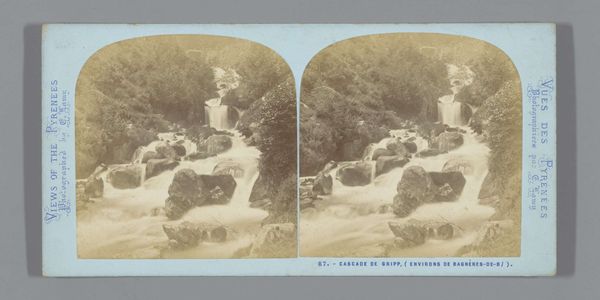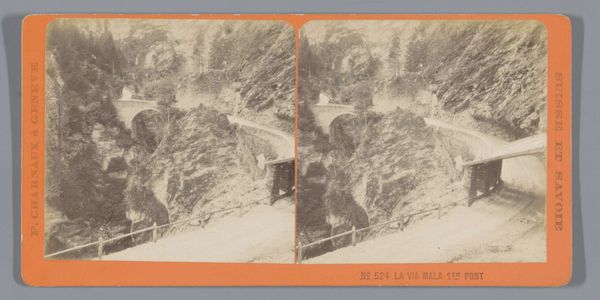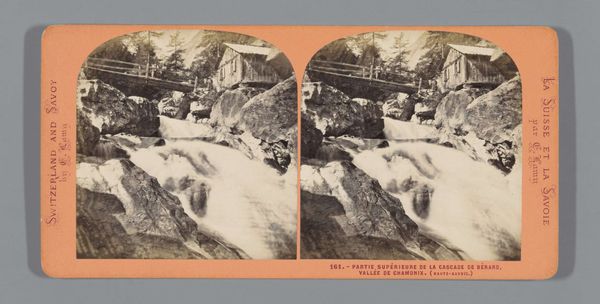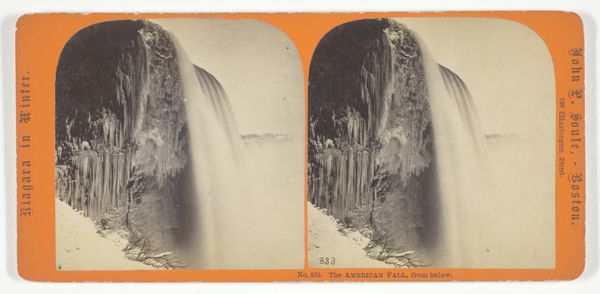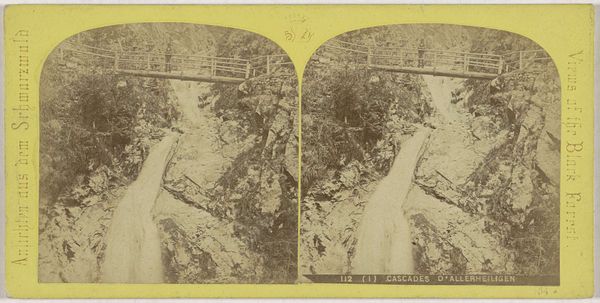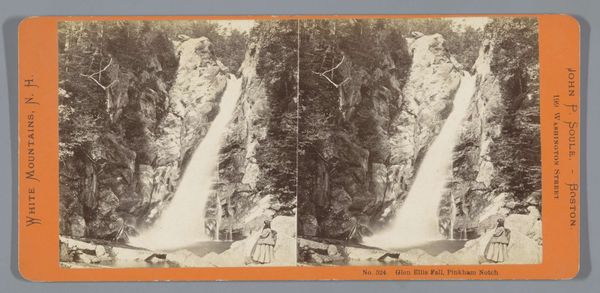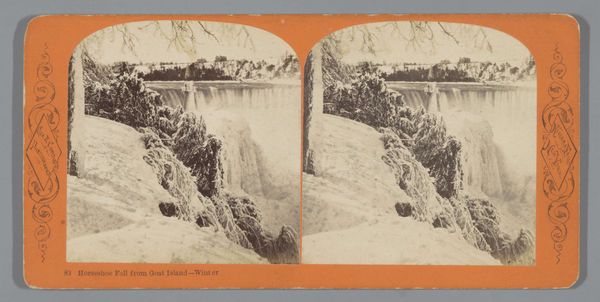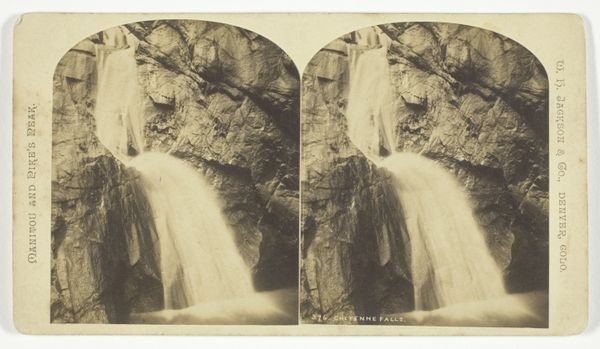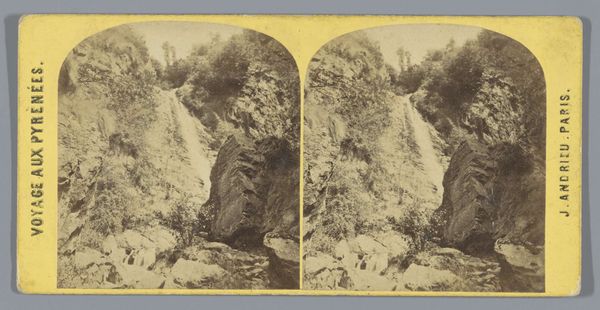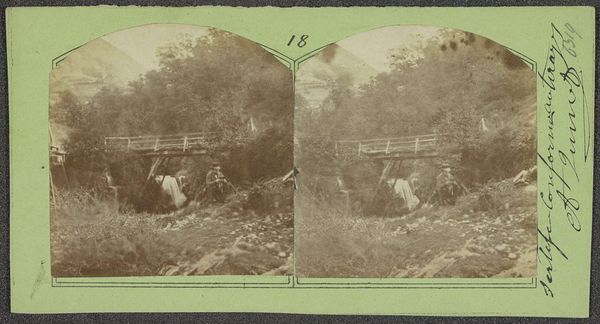
Dimensions: height 88 mm, width 176 mm
Copyright: Rijks Museum: Open Domain
Curator: This is a stereoscopic photograph entitled “Gezicht op de Fiumelatte rivier nabij Varenna,” or “View of the Fiumelatte River near Varenna.” It’s attributed to Jean Andrieu, and was likely created sometime between 1872 and 1876. Editor: My immediate impression is of dynamic energy, surprisingly captured in such a potentially static medium. The cascading water really pops against the aged, monochromatic print. What a remarkable sense of depth! Curator: Yes, stereoscopic photography offered viewers in the late 19th century a fascinating sense of realism and immersion. Images like this one became incredibly popular, fueling a desire to see and experience faraway places from the comfort of one’s home. Tourism was becoming democratized through photography. Editor: Fascinating that you mention the 'democratization' of experience. What strikes me most are the elements indicating human interaction with the natural environment. Notice how the power of the river is physically harnessed through the presence of a water wheel on the left? The material reality— the construction, labor, and operation of such a machine– highlights human adaptation. Curator: Indeed, those watermills provide a powerful symbolic contrast. Nature’s raw energy is not only presented but also harnessed for human industry, revealing a progressive narrative of control over nature—a popular theme within the Western political imaginary. Editor: I find the emphasis on pictorialism interesting here. It’s trying to elevate photography to high art by imitating painting. How do we reconcile that tension between technological innovation and artistic aspiration through formal aesthetics? Curator: I interpret that through a historical lens; in a time when photography struggled for artistic validation, emulating the aesthetic qualities of painting served to legitimize its presence within the established art world. Editor: That's certainly valid, although I can't help but see that process as also indicative of labor – literally working the photograph into something more than what it is, something that could signify how labor reshapes matter to our will. Well, regardless of all, it is a wonderful, and quite complex work! Curator: I completely concur. It really does encapsulate such a specific moment in time – in image-making, tourism, and ideology!
Comments
No comments
Be the first to comment and join the conversation on the ultimate creative platform.

